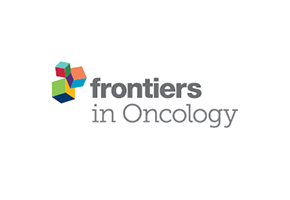 “Cannabinoids exhibit anti-inflammatory and antitumorigenic properties.
“Cannabinoids exhibit anti-inflammatory and antitumorigenic properties.
Contrary to most cannabinoids present in the Cannabis plant, some, such as O-1602 and abnormal cannabidiol, have no or only little affinity to the CB1 or CB2 cannabinoid receptors and instead exert their effects through other receptors.
Here, we investigated whether the synthetic regioisomers of cannabidiol, abnormal cannabidiol, and a closely related compound, O-1602, display antitumorigenic effects in cellular models of breast cancer and whether it could reduce tumorigenesis in vivo.
Several studies have shown the effects of cannabinoids on chemotherapy-sensitive breast cancer cell lines, but less is known about the antitumorigenic effects of cannabinoids in chemotherapy-resistant cell lines.
Paclitaxel-resistant MDA-MB-231 and MCF-7 breast cancer cell lines were used to study the effect of O-1602 and abnormal cannabidiol on viability, apoptosis, and migration. The effects of O-1602 and abnormal cannabidiol on cell viability were completely blocked by the combination of GPR55 and GPR18-specific siRNAs. Both O-1602 and abnormal cannabidiol decreased viability in paclitaxel-resistant breast cancer cells in a concentration-dependent manner through induction of apoptosis. The effect of these cannabinoids on tumor growth in vivo was studied in a zebrafish xenograft model. In this model, treatment with O-1602 and abnormal cannabidiol (2 µM) significantly reduced tumor growth.
Our results suggest that atypical cannabinoids, like O-1602 and abnormal cannabidiol, exert antitumorigenic effects on paclitaxel-resistant breast cancer cells. Due to their lack of central sedation and psychoactive effects, these atypical cannabinoids could represent new leads for the development of additional anticancer treatments when resistance to conventional chemotherapy occurs during the treatment of breast and possibly other cancers.”
https://www.ncbi.nlm.nih.gov/pubmed/31611800
“Our results suggest that some cannabinoids acting through the GPR55 and/or GPR18 receptors can be helpful in inducing apoptosis in breast cancer cell lines that are unresponsive to paclitaxel. The effects of O-1602 and Abn-CBD on cell viability were observed both in vitro and in a zebrafish xenograft model. These drugs were also reducing cell migration. Taken together, even if no synergistic antitumor effect is always observed when cannabinoids and chemotherapeutic agents are combined as an anticancer treatment, cannabinoids can still provide anticancer benefits on top of their palliative effects. This is particularly important in the context of cancers that have developed resistance to current chemotherapies.”
https://www.frontiersin.org/articles/10.3389/fphar.2019.01124/full




